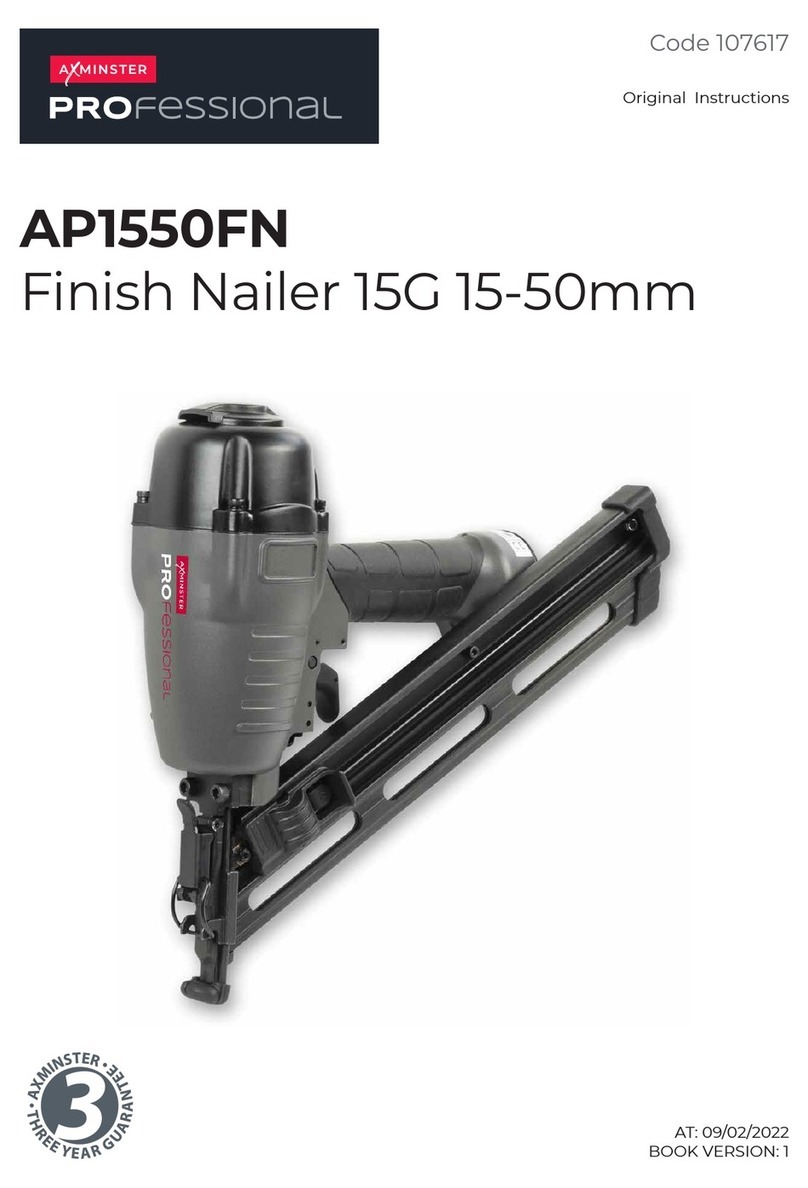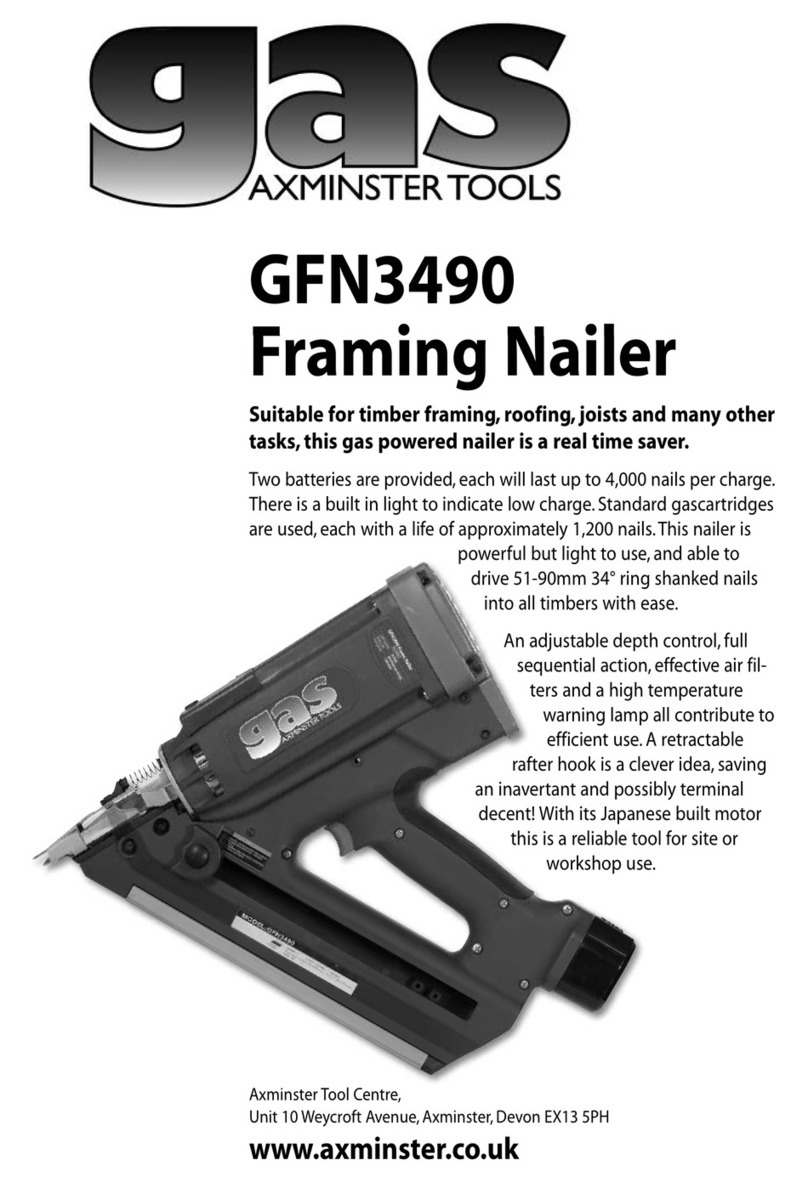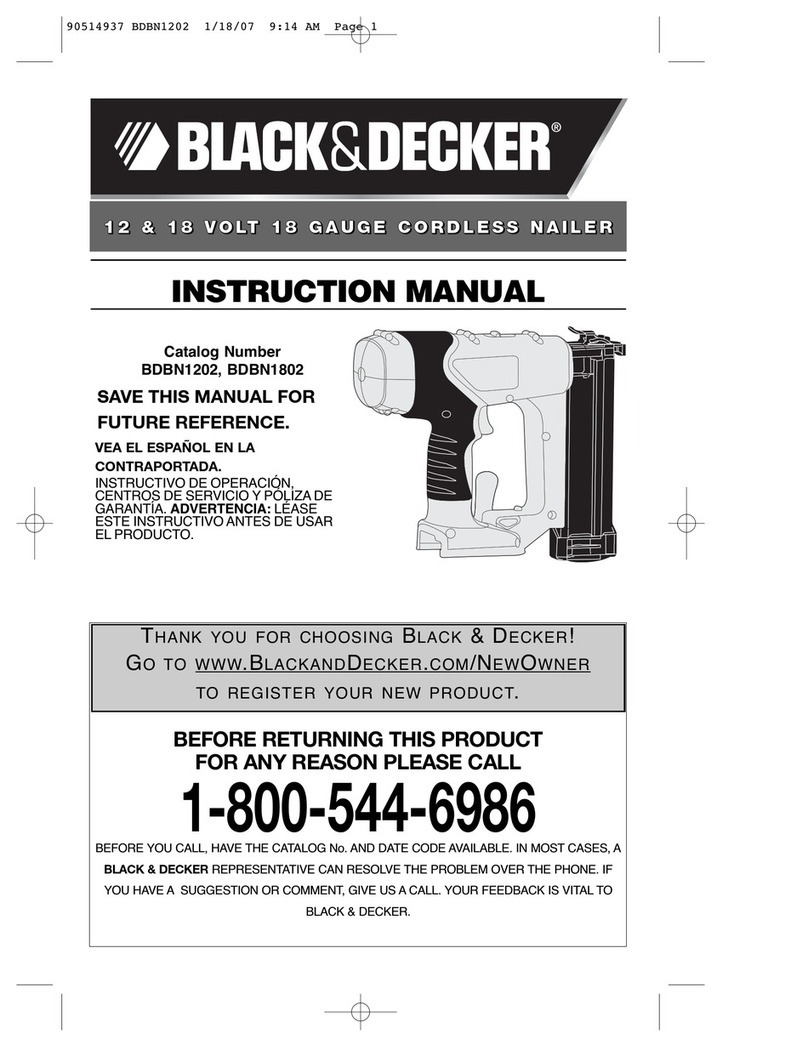What’s in the Box
03
Quantity Item Model Number
1 No. Axminster White Palm Nailer with PCL tail fitted. MSN120
1 No. Oil Bottle
1 No. 4mm Allen Key
1 No. Manual
Having unpacked the tool and its accessories,
please check the contents against the equipment
list ”What’s in the box”, if there are any discrepancies,
please contact Axminster Power Tool Centre using
the procedures laid down in the catalogue. Please
dispose of the packaging responsibly; much of the
material is bio-degradable.The tool is plated and
painted to prevent corrosion, so there should be
little or no cleaning required before use.
Please read the Instruction Manual prior to using
your new tool; as well as general precautions and
instructions for use, there are daily and periodic
maintenance recommendations to help you keep
your tool on top line and prolong its life. Keep this
Instruction Manual readily accessible for any others
who may also be required to use the tool.
General Safety Instructions and Recommendations whilst using Air Equipment
Good Working Practices/Safety
The following suggestions will enable you to observe good working practices, keep yourself and fellow
workers safe and maintain your tools and equipment in good working order.
WARNING!! KEEP TOOLS AND EQUIPMENT OUT OF THE REACH OF YOUNG
CHILDREN
Air Powered Tools
!
Work Place/Environment
Keep the tool clean; it will enable you to more easily
see any damage that may have occurred. Clean the
tool with a damp soapy cloth if needs be, do not use
any solvents or cleaners, as these may cause
damage to any plastic components. Check the tool
for damage both before and after work. If damage
has occurred, have it repaired by a suitably qualified
person.
Check the air lines are undamaged, that supply
galleries, spurs or connectors are not leaking.
Keep the work area as well lit and uncluttered as is
practical, this includes personnel as well as material.
Under no circumstances should CHILDREN be
allowed in work areas.
It is good practice to leave the tool disconnected
from the air supply until work is about to
commence, when it is not in use, or unattended.
Once you are ready to commence work, remove any
tools used in the setting up operations (if any) and
place safely out of the way. Re-connect the tool.
Carry out a final check e.g. the connector is tight ‘on’,
the air lines are not leaking, any bits etc, fitted to the
tool are secure, check you have the correct pressure
set, and if you require to move around during the
work operation, that air lines etc, will not ‘snag’.




























